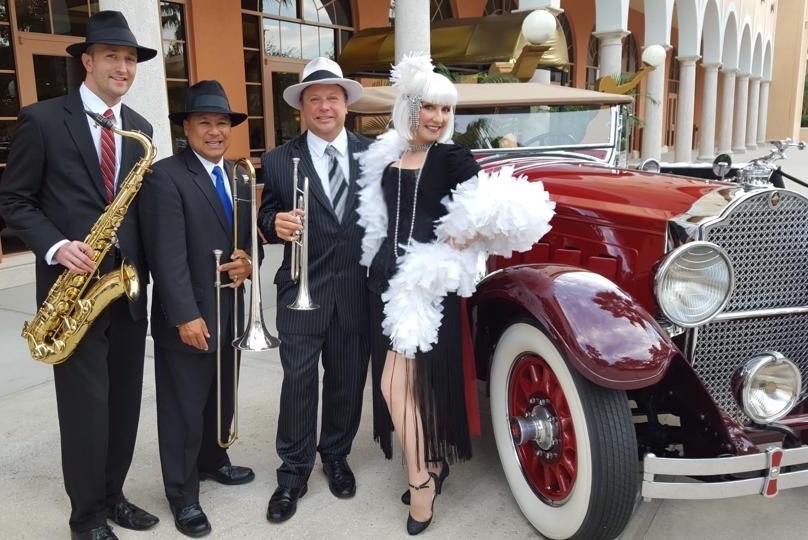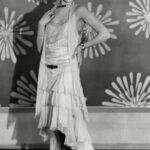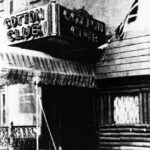It’s called the Speakeasy Fundraiser.
3001 Nightlife, the successful nightclub in Myrtle Beach, created this event to celebrate the 90th anniversary of the end of Prohibition.
This will be a fun night with people dressing up in the style of the 1920s, transporting us back to the Jazz Age with flappers and Gatsby look-a-likes.
At the same time, this event will raise awareness about the modern day problem of human trafficking and work slavery.
As you will see below, we produced a video segment publicizing the event — on August 24, 2023, from 6 to 10 PM — with a Gatsby-wannabe narrating.
You will hear from 3001 Nightlife’s Charlene Dougherty who gives us the rundown of events that include music from the Jazz Age and today while encouraging all party-goers to jump into some historical fashions, although it is not mandatory.
In producing this segment, I realized how brilliant and historically relevant this event really is.
I am fortunate enough to have studied in-depth the 1920s while re-reading more than a dozen times F. Scott Fitzgerald’s American masterpiece The Great Gatsby and analyzing the two Hollywood films depicting the book.
So, I dove into some of my 1920s backlog data.
Let me share some of it here that will add some historic dimension to the fun you will be having at this event.
It’s amazing the correlations between the 1920s and today’s 2020s a century later that tie into the 3001 Nightlife fundraiser.
First, the Jazz Age had newfound sense of liberation and sexual freedom. A lot of that had to do with overcoming the horror of World War One. But that also led to the exploitation and trafficking of women. Brothels, speakeasies, and underground establishments operated in major cities, catering to the desires of the wealthy and powerful. Vulnerable women, often lured by false promises and economic desperation, were coerced into a life of sex work, enduring physical and emotional abuse. The lack of legal protection for these women perpetuated a cycle of exploitation that continues to resonate with the sex trafficking crisis of the present day.
The 1920s — like today — also witnessed a significant increase in illegal immigration, primarily driven by economic opportunities and political unrest. With the passage of restrictive immigration laws, such as the Emergency Quota Act of 1921 and the Immigration Act of 1924, immigrants sought alternative routes to enter the United States. Human smuggling networks emerged back then, like today, exploiting the desperate immigrants seeking a better life. Like today, these networks facilitated illegal border crossings, often subjecting individuals to dangerous conditions and extortion. The parallels between the illegal immigration of the 1920s and contemporary migration issues where today neither political party will address compromised solutions while the enduring challenges continue for vulnerable people seeking refuge and opportunities.
How about organized crime. Granted today’s crime syndicates look quite different. The rise of organized crime during Prohibition further exacerbated the issues of sex trafficking and illegal immigration. Criminal syndicates, such as the notorious Chicago Outfit and New York’s Five Families, controlled various illegal activities, including prostitution rings and human smuggling networks. These criminal enterprises thrived due to corruption within law enforcement agencies, making it difficult to combat the underlying issues. Today, the entanglement of organized crime with human trafficking and illegal immigration remains a persistent challenge worldwide.
So, the similarities are striking. Sadly, these are problems that persist or have been ignored.
Still, 3001 Nightlife and also North Myrtle Beach Rotary, which is working hard to shed light on the issue, both need to be praised.
However, the similarities tying the 1920s to the 2020s doesn’t stop there.
Muse on this as you enjoy a libation at the event.
Economic Boom and Income Disparity.
Just as the 1920s marked a period of unprecedented economic growth and wealth accumulation, the current decade has witnessed a similar trend. The stock market is soaring, technological advancements are reshaping industries, and a select few individuals are amassing fortunes of unimaginable proportions. However, with this prosperity comes a widening income gap, reminiscent of the social divides that characterized the Jazz Age. The extravagant lifestyles of the super-rich juxtaposed against the struggles of the working class are recurring themes in both eras.
Materialism and Consumer Culture
The 1920s were characterized by an obsession with material possessions and a conspicuous display of wealth. Similarly, the 2020s have seen the rise of a consumer culture fueled by social media and an insatiable desire for the latest trends. The allure of luxury brands, the obsession with status symbols, and the pursuit of instant gratification seem to have transcended time, highlighting the enduring human fascination with materialism.
Social Liberation and Changing Gender Roles:
The 1920s witnessed a significant shift in societal norms, particularly in terms of gender roles and women’s liberation. This era marked the rise of the “flapper” culture, with women challenging traditional expectations and embracing newfound freedom, asserting their independence through fashion, behavior, and career choices. Fast forward to the 2020s, and we find ourselves in an era where conversations around gender equality, inclusivity, and the dismantling of societal expectations are at the forefront of social discourse. The parallels between these two epochs highlight an ongoing struggle for equality and the evolution of societal norms.
Technological Advancements and Social Connectivity The 1920s were marked by technological progress, with inventions like the radio and the automobile transforming the way people communicated and connected with each other. Fast forward a century, and we witness a similar wave of technological advancements, with smartphones, social media platforms, and virtual reality revolutionizing the way we interact and experience the world. The ability to connect instantly and share our lives with others echoes the spirit of the 1920s, where the world began to shrink and boundaries blurred.
Ironically, all of these advancements lead to other unintended problems within society.
As many folks say, the more things change, the more they stay the same.
F. Scott Fitzgerald pointed this out at the end of The Great Gatsby.
Nick Carraway, the character narrating the book, reflecting on the past, and its impact on our lives, says:
“So, we beat on, boats against the current, borne back ceaselessly into the past.”
It’s a powerful conclusion to Fitzgerald’s masterpiece, leaving readers with a sense of both hope and melancholy, as they contemplate the eternal pull of the past.
Much like today.
Enjoy this great event and understand its significance.
If you are curious, I would suggest reading The Great Gatsby and watching the two films, one with Robert Redford in the 1970s, the other with Leonardo DiCaprio about 45 years later.
In the meantime, take a look at our video giving you all you need, Old Sport.
John Daly is the host of Carolina Buzz covers business and entertainment along the booming Carolina coasts. Carolina Buzz is produced by WingDing TV. Need to get your businesses story out, contact us. Yes, we’re more than video production company. We provide digital marketing that touches your audience far better than old style media. We can propel your business here and beyond the Carolinas. Call us at 843-272-1901.






